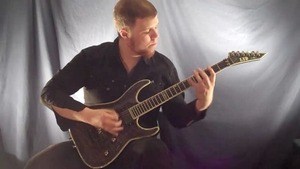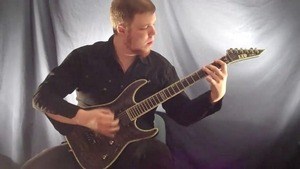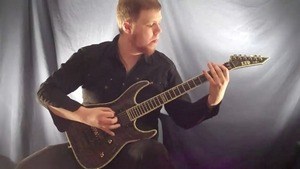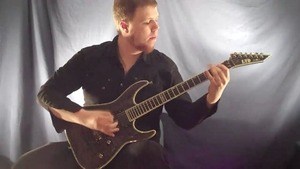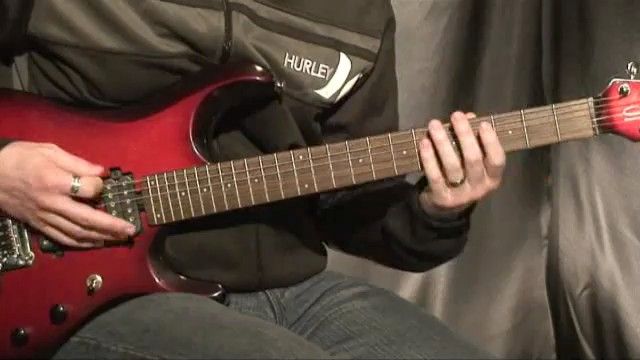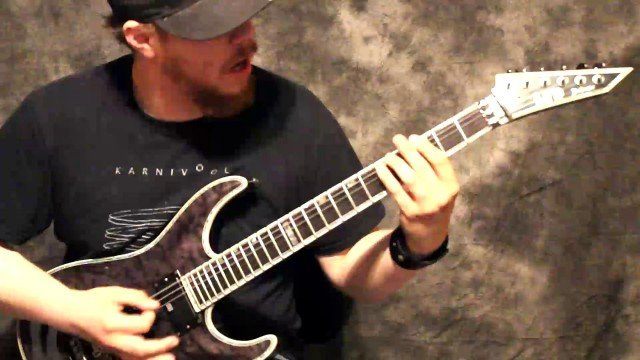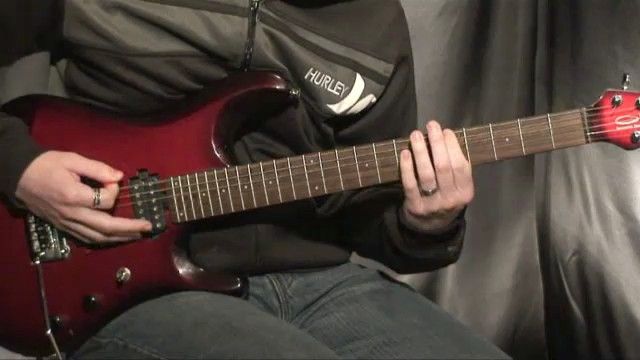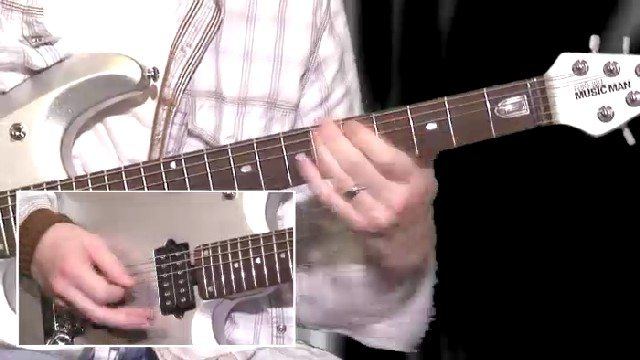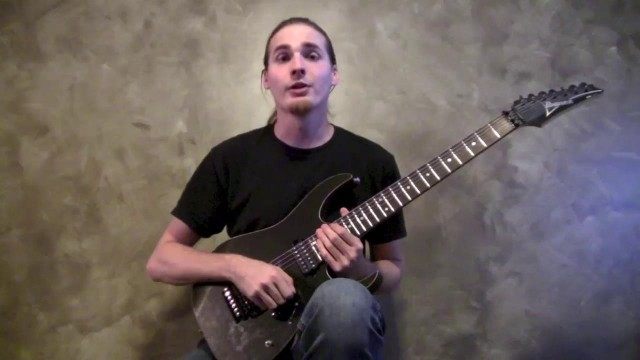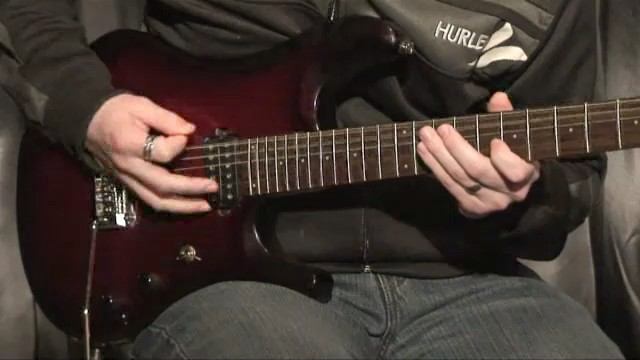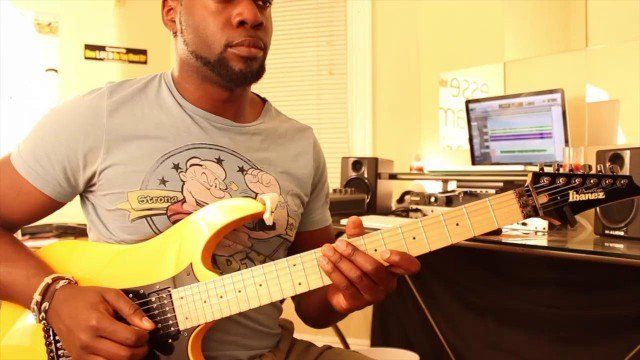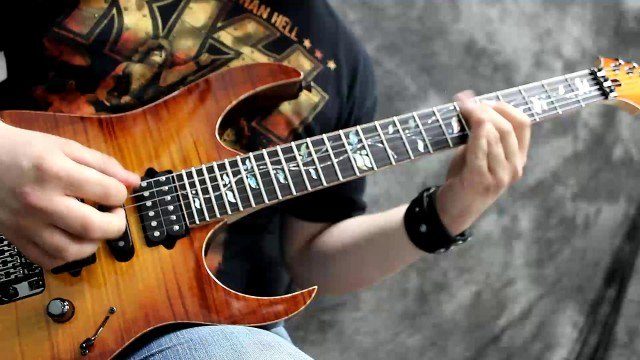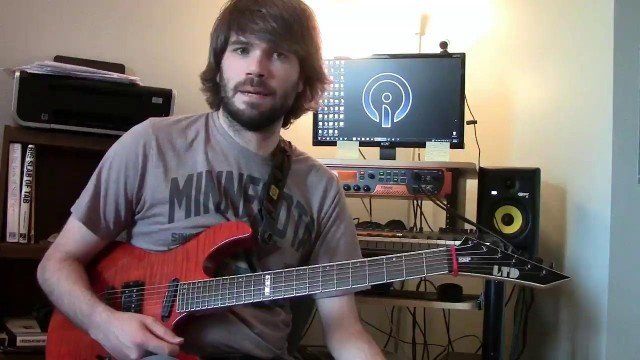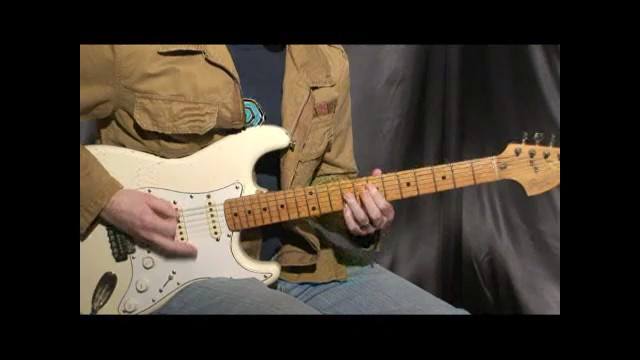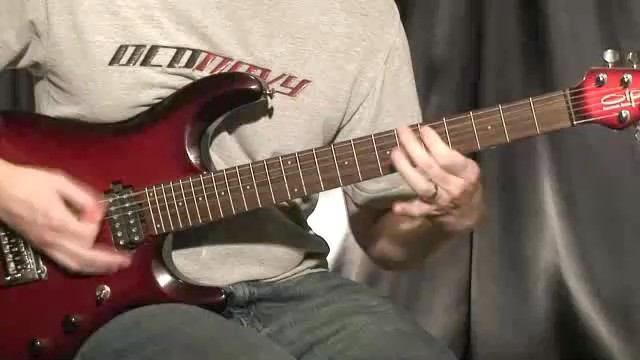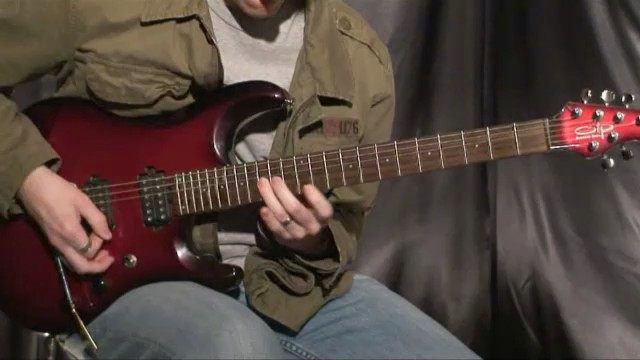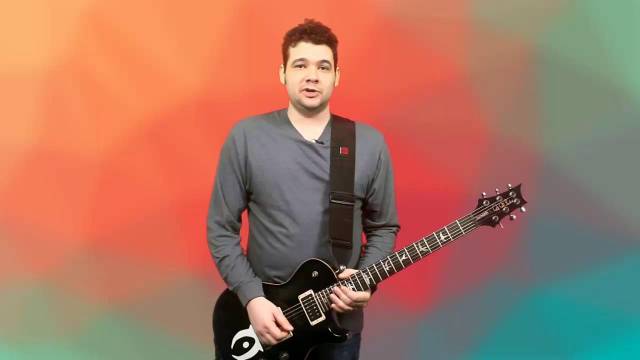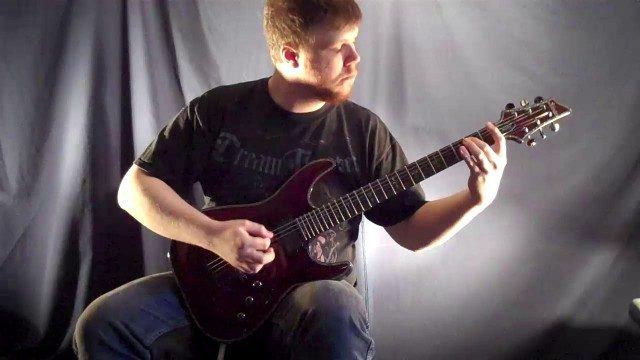Intro:
Make the distinction between rests and longer note durations, for instance; the Bb note on the third fret in bar 1 is a held 8th beat, wheras the two 16ths that follow are short 16ths followed by a rest.
Palm muting is imparitive and it's important that your technique allows you to switch it on and off at the drop of a dime. The very first sequence of notes is comprised of "chugging" on the low C string, with higher "punches" on the 6th and 3rd frets. Releasing the mute on the higher notes is very important as it offers the contrast between the two dynamics which will make or break a riff of this sort.
Verse:
This riff is made of a rhythm pattern very frequent in most "djent" forms of metal; the dotted-eighth feel. We examined this type of riff in an earlier tutorial, but here we see it put to work in a real song context and it produces a pretty rockin' groove.
We're simply playing 2 16ths, with the third being a rest or a first-fret bend. Once the riff is mastered rhythmically, the note sequences are actually quite simplistic. So if it's the rhythm causing issues, practice to a metronome the very first three notes (2 open low C notes, and a rest) in a repetitious fashion until it feels a little more natural.
One thing that must be addressed is the picking directions used. Note, that in any 16th beat alternate picked sequence, the down beat usually signifies a down stroke, and the up beat, an up stroke. So in other words, here's the picking pattern sticking to the conventional down-beat = down-stroke, up-beat = up-stroke method.
| 1 | e | & | a | 2 | e | & | a |
| D | U | U | D | D | U |
And here is the exact rhythm incorporating the new picking pattern:
| 1 | e | & | a | 2 | e | & | a |
| D | U | D | U | D | U |
Where things differ with this riff, you'll see right from the get-go. Every 2 note sequence begins with a down-stroke, wheras usually, the second sequence that falls on the up-beat, and would usually warrant an up-stroke. The reason for this is for rhythmic dynamic. You'll notice a difference in the percussiveness of the groove by simply making this small change. Much more djent!
Once again, focus on the "P.M. ----|" written above the note sequences for accurate palm muting.

